
Ride along with author Tom Cotter and photographer Michael Alan Ross as they pilot their Ford Bronco/Airstream Basecamp combination 8,881 miles along the lower 48’s back roads and byways.
Tom Cotter has spent decades ferreting out lost “barn find” collector cars. The process has made him an ardent road tripper, logging thousands of miles every year on America’s back roads. Previous journeys have traced Route 66 in his 1939 Ford Woody wagon and followed the Lincoln highway coast to coast behind the wheel of a 1926 Model T.
Cotter’s journeys led him to wonder: What could be the most epic American road trip? The answer: Key West, Florida, to Deadhorse, Alaska, its thousands of miles recounted in America’s Greatest Road Trip. Cotter and Ross drove across the country, through British Columbia and the Yukon, and finally through Alaska to the literal end of the road. Ross documented their road time in thousands of photographs.
Along the way, the pair met fellow road trippers, adventurers, small-town Americans, world travelers, and rolled through an ever-changing geography from the Gulf of Mexico to the Mississippi Delta to the Great Plains and Mountain states through the Northwest Passage and finally several hundred miles of Alaska’s challenging ALCAN Highway.
Cotter’s observations of Two-Lane America are complemented by Ross’s beautiful photography capturing both the sweep and the detail of life off the beaten path.
Join them on their once-in-a-lifetime journey—you’ll be glad you came along for the ride.
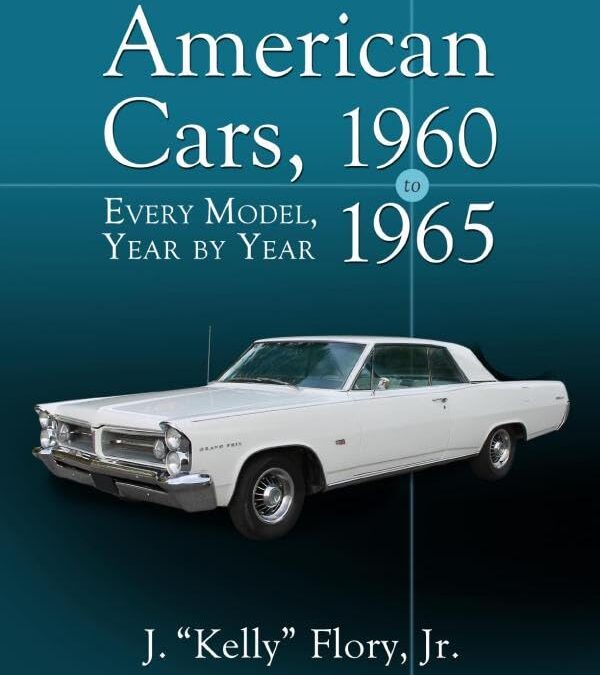

The industrial and technical history of the Lambretta Junior series, told through invaluable archive materials.
In the early Sixties, Innocenti took a technological leap in the engineering of the Lambretta, introducing for the first time a monocoque frame clearly inspired by its direct rival, Piaggio’s Vespa. This led to the birth of the Junior series, with models aimed at younger riders and with lower list prices than the traditional LI and TV versions.
This new book devotes specific chapters to questions of production, technology, advertising, and many other areas of interest regarding this series of models that once again enjoyed notable success with the public.
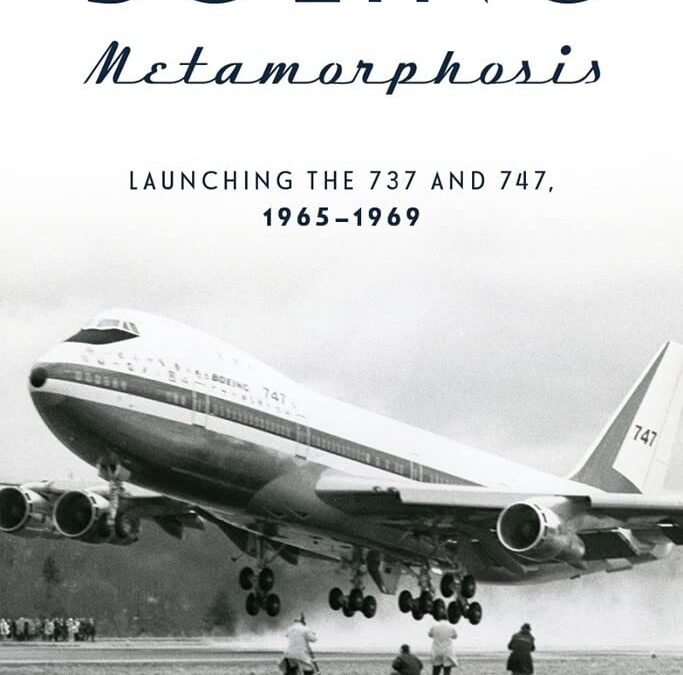
A unique insider look at the profound changes Boeing experienced in the 1960s as the product mix shifted from military hardware to the first generation of jet-powered airliners.
Welcome to the world of corporate decision-making, workplace gambles, and a myriad of human interactions. This is a story that affirms the traditional values of hard work, fidelity, and building the human alliances necessary for achieving enduring success. John Andrew, a retired Boeing executive, offers a unique insider perspective of the changes Boeing experienced in the 1960s.
- The requirement for more factory space was fueled by new models and a surging worldwide demand for air travel.
- Massive construction projects were launched, including a newly constructed 747-sized factory on 760 acres at Paine Field in Everett, Washington.
- These cathedrals of airframe assembly remain vital to Boeing’s ongoing operations today.
- More than 130 color and black-and-white images.
Explore the amazing growth and evolution of Boeing, one of the giants of aviation.
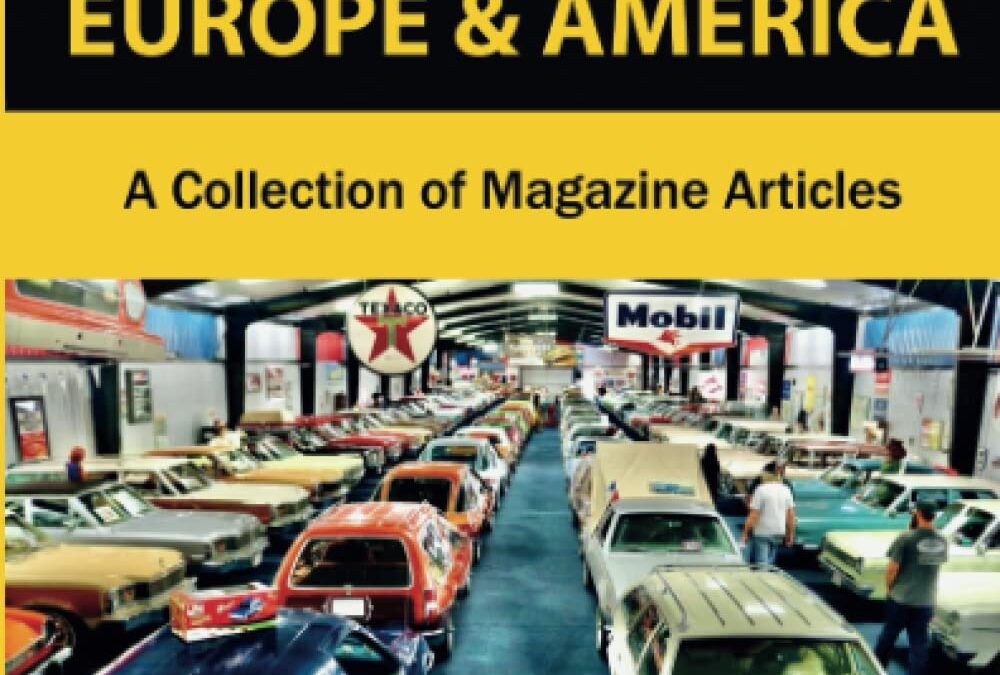
- Car enthusiasts will enjoy 75 Top Car Museums in Europe & America, a perfect companion to the author’s previous book, the Roadster Guide to America’s Classic Car Museums & Attractions.
- The collection of magazine articles about 75 leading car museums in Europe and America provides in-depth coverage of museums ranging from the Hellenic Motor Museum in Greece to the Petersen Museum in California.
- Side trips include Italy’s Museo Ferrari and the National Motor Museum in England while quirky cars are on display at the Trabi Museum in Berlin, State Police Car Museum in Rome, and the Cars of Socialism Museum in Bulgaria.
- Among the highlights in America are Michigan’s Gilmore and Henry Ford museums, Presley Motors at Graceland and two iconic LeMay museums in Washington.
- These articles were written by the author and previously published in leading car magazines including Hemmings Motor News, Classic & Sports Car, Octane, Classics Monthly, Classic Military Vehicle, and more.

In the late 1970s, the problem facing any manufacturer taking part in the World Rally Championship was that the rules kept being changed at short notice. This book looks at the solutions found for Lancia’s rally car, the 037, and takes the reader through the new rules that all potential contenders would have to consider if they wanted to win rallies at World Championship level.
Lancia’s Rally was developed quickly to deal with the then-dominant Audi Quattro. The reasons it succeeded are featured here, along with an in-depth, behind-closed-doors look at the development of the car, with the close help and cooperation of its designer and chief engineer, Ing. Sergio Limone.
Here you can read how he decided on the basic configuration of the car, what the rules would allow, and how the project unfolded in total secret at Fiat’s various test tracks and centres in and around Turin, overlaid with rumour and counter-rumour as the world’s motoring press tried to make sense of what little knowledge it had of the project’s progress. In addition, Ing. Limone’s own photographs from areas never accessed by the public tell their own story. The focus then moves to the world of top-level rallying, with all the associated glory and headaches. Accompanied by stunning photography and insights from team members, we follow the small and nimble 037s, as the cars have become popularly known, as they head out to take the World Rally Championship for Makes in 1983 and innumerable wins throughout the world. In addition, there are tests of various key examples of the cars, and appendices of events and chassis used. This book is illustrated with 250 stunning and rare rally action photos.
Veloce Classic Re-Prtint

Discover a fascinating array of special edition Camaros written by Chevrolet historian and COPO authority, Matt Avery.
Chevrolet’s iconic Camaro arrived in the fall of 1966 and, although tardy to market, it came ready to mix things up in the wildly popular “pony car” segment. Ford’s Mustang was a runaway success, but this new competitor reined in momentum by offering customers an even closer friend of driving enthusiasts.
A credit to General Motors, the Camaro charged hard out of the gate, becoming an instant hit. In each of its first three years, it sold almost a quarter million units, causing a decline in sales for the crosstown Detroit rival. In the decades to follow,
Chevy crafted Camaro variants to suit everyone with enterprising hot rodders and performance tuners always taking it one step further. Enter the high-octane world of Camaro special editions.
Driven to achieve their own competition success and following the high-revving demands of enthusiasts, numerous Camaro special editions have been produced over the years, becoming some of the most collectible cars of all time.
Covered here are not only the factory models such as Indy 500 and Brickyard 400 pace and festival cars, ZL1s, anniversary editions, IROC-Zs, Player’s Challenge, Hot Wheels editions, Z/28s, and RS/SS cars. Also, Camaro Special Editions covers the legendary COPO cars and dealer go-fast specials from builders including Yenko, Dana, Nickey, Berger, Baldwin-Motion, Gorries, and Dick Harrell.
More modern performance editions are covered as well with Callaway, SLP, SVE, GMMG, Earnhardt, and more. Detailed information is provided on the most notable models from 1967 to today, including build numbers, production specs, and their collectability.
This book is a must-have resource for the Chevy and Camaro faithful.
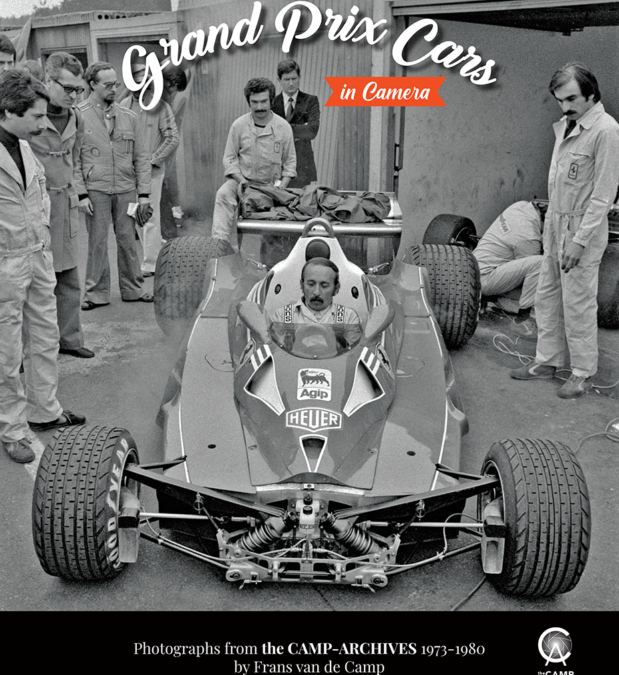
Photographs from the CAMP-ARCHIVES
The nineteen seventies were an extremely interesting period in the history of Formula One, as many of the technical details we take for granted on a modern Grand Prix car were invented then. It is during this period that the author started visiting Grand Prix races, taking numerous photographs, which are now published for the first time.
As ‘Grand Prix Cars in Camera’ covers all the marques that participated in Formula One racing from1973- 1980 the book provides a broad picture of the development of the Grand Prix car in that era.
After the introduction the history of each make is described in separate chapters. There is also a good deal of technical information, regarding chassis numbers, engines, suspension, aerodynamics etc. so the reader gets a broad view of the development of the Grand Prix car in that era.
444 Pages
379 photos
23×28 cm
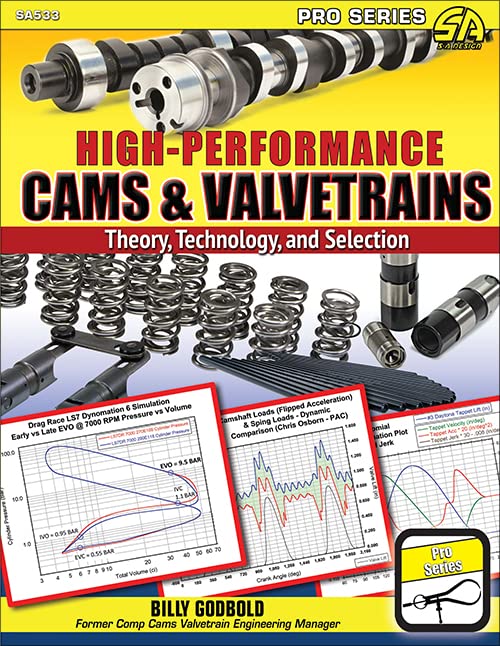
Understand the “magic” of how optimized camshafts extract the most performance from every engine component, eliminating valvetrain guesswork.
Camshafts are the coach and conductor of any four-stroke engine from early flatheads to modern Formula 1. Performance engines are amazingly sensitive to how and when the valves to the combustion chamber open and close. The valvetrain configuration and flow characteristics may change significantly between applications, but the fundamental principles are universal. This allows the language, setup, dynamics, energy, and pressure aspects of a valvetrain to be covered in a way that is just as useful for optimizing a sub-15-hp go-kart engine as it is on a 500-plus-hp street engine or modern 1,500-plus-hp NHRA Pro Stock engine.
In High-Performance Cams and Valvetrains: Theory, Technology, and Selection, farm-kid-turned-physicist Billy Godbold combines his quarter-century of experience with valvetrains at Comp Cams, Lunati, Crane Cams, and Edelbrock with the techniques he uses with professional teams in NASCAR, the NHRA, road racing, dirt-track racing, offshore racing, and land speed racing. He guides you to think about any valvetrain system with his perspective. Often lighthearted and filled with analogies, this book endeavors to make complex concepts easy to understand without watering down important details.
Specific configurations and applications are covered, providing techniques and examples for optimizing camshafts and the valvetrain around intakes, headers, superchargers, turbochargers, fuels, carburetors, and modern EFI applications. If you are planning or building a performance engine, or if you just want to know the science behind how cams and valvetrains work, this book is an indispensable resource.

In this expanded collector’s edition of The Art of NASA, complete with a paper model Lunar Module and a poster, explore over 200 stunning artworks commissioned by NASA to sell its missions.
Formed in 1958, NASA has long maintained a department of visual artists to depict the concepts and technologies created in humankind’s quest to explore the final frontier. Culled from a carefully chosen reserve of approximately 3,000 files deep in the NASA archives, the 200+ awe-inspiring illustrations presented in this special boxed edition are complemented by:
- 32 pages of new material
- A paper model of the Lunar Module
- A rolled poster
- A sheet of four postcards
- A new foreword by astronaut Tom Jones
From space suits to capsules, from landing modules to the Space Shuttle, the International Space Station, and more recent concepts for space planes, The Art of NASA presents 60 years of American space exploration in an unprecedented fashion. All the landmark early missions are represented in detail—Gemini, Mercury, Apollo—as are post-Space Race accomplishments, like the mission to Mars and other deep-space explorations.
The insightful text relates the wonderful stories associated with the art. For instance, the incredibly rare early Apollo illustrations show how Apollo might have looked if the landing module had never been developed. Black-and-white Gemini drawings illustrate how the massive NASA art department did its stuff with ink pen and rubdown Letraset textures. Cross-sections of the Apollo–Soyuz Test Project docking adapter reveal Russian sensitivity about US “male” probes “penetrating” their spacecraft, thus the androgynous “adapter” now used universally in space. International Space Station cutaways show how huge the original plan was, but also what was retained.
Every picture in The Art of NASA tells a special story. This collection of the rarest of the rare is not only a unique view of NASA history—it’s a fascinating look at the art of illustration and a glimpse of NASA history like no other.

Whether you are a new or longtime Formula 1 fan, here is your ultimate, unofficial armchair companion to the popular Netflix series Formula 1: Drive to Survive, providing deeper insight into the players, tech, and history that drive the show’s plot points.
F1 expert Stuart Codling
is your guide to all things F1.
The Formula 1 Drive to Survive Unofficial Companion is a
feature-rich guide that takes you
beyond the series’ personalities and off-track drama to present further context. Topics covered include:
- People – Who does what to keep F1 teams rolling? From personal trainers to race engineers, mechanics, pit crew, and team principal, what does it take to succeed in F1? Sidebars and callouts include significant past players and great rivalries including that between Toto Wolff and Christian Horner.
- F1 History in 20 Cars – From Fangio’s postwar Alfa Romeo to Max Verstappen’s Honda-powered Red Bull and Lewis Hamilton’s Mercedes, all the great teams feature: Ferrari, Williams, McLaren, Lotus, and more. Callouts features driver gear and great past drivers like Andretti, Brabham, Moss, Schumacher, and more.
- Technology – Who designs and builds today’s mind-bending cars and engines and what does the process entail? Side journeys explore safety features, technology behind key components, and big ideas that flopped.
- F1 Circuits – A look at F1 race course in today, along with features on circuit design, past circuits, and notorious circuit features like Loew’s Hairpin at Monaco and Eau Rouge at Spa Francorchamps.
- Race Strategy – The rules and strategies of race day. Sidebars explore things like tire strategy, the anatomy of a pit stop, and the role of analytics.
- Business – Who pays for the multibillion-dollar spectacle on display in Drive to Survive and how is it possibly profitable? Features and callouts explore the evolution of sponsorship, driver salaries, and backroom deals.
Where relevant, Codling relates content to specific seasons and episodes, providing even more context for the reality series. The visuals include scores of action and off-track photos. The result is a visually stunning guide to accompany a wildly popular TV series, and an engaging history spanning seventy-plus years of the world’s most popular motorsport.
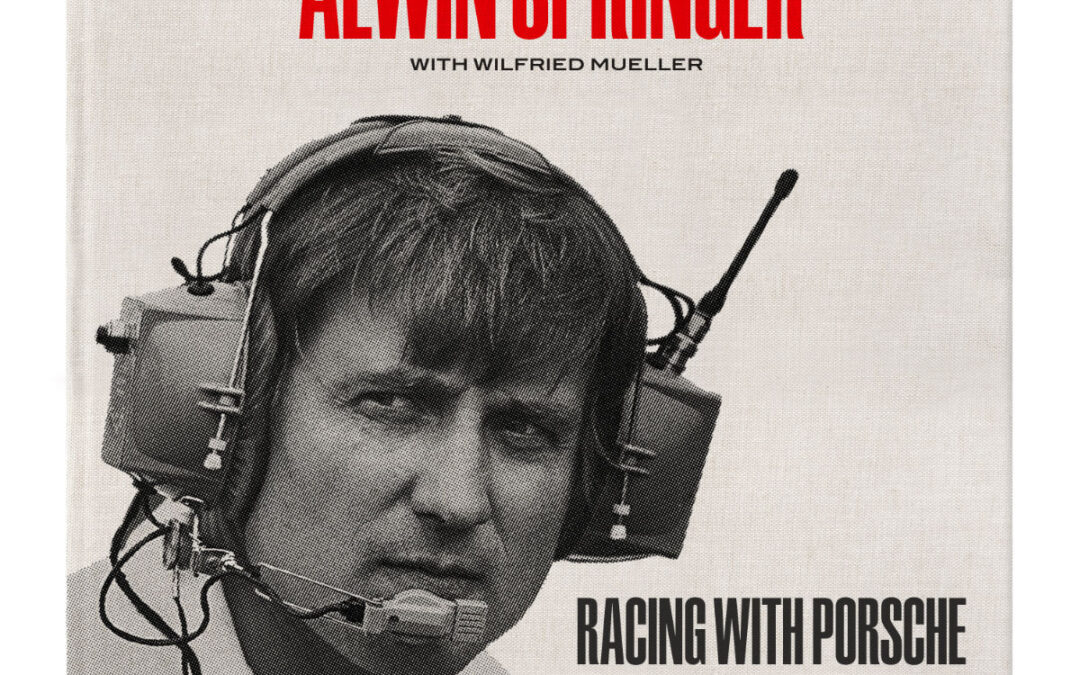
Growing up in the Ruhr area of Germany, Springer emigrated to Canada in the 1960s, but soon settled in California due to the warmer weather. There, after further improving his skills, the trained car mechanic/electrician found a job with Porsche specialist Vasek Polak and from then on looked after Polak’s Can-Am race cars as a mechanic.
Later, Springer started his own venture Andial with former Polak colleagues Arnold Wagner and Dieter Inzenhofer. The now-legendary tuning company went on to compete successfully in IMSA and, with the Andial engines, enjoyed quite a bit of success in other racing series as well. Andial became the number one address for Porsche customers in the USA, and even at Le Mans, customers of the German marque started using Andial engines. The secret of the California-based German trio: they had entrusted a capable man in Silicon Valley with the task of decoding the engine control system of the Porsche factory and thus making all parameters freely adjustable. Alwin Springer and his team perfected their set-ups in hours of test-bench runs. Morever, Springer also had a key role in the relaunch of Porsche Motorsport North America at the end of 1989 and is still active as a consultant for PMNA today.
Alwin Springer, together with Wilfried Müller, summarises his experiences from Can-Am, IMSA and the modern era at PMNA in 47 entertaining chapters, accompanied by countless photos from his private collection dating back to his early years with Vasek Polak.
Hardcover with slipcase
Limited to 963 copies, individually numbered
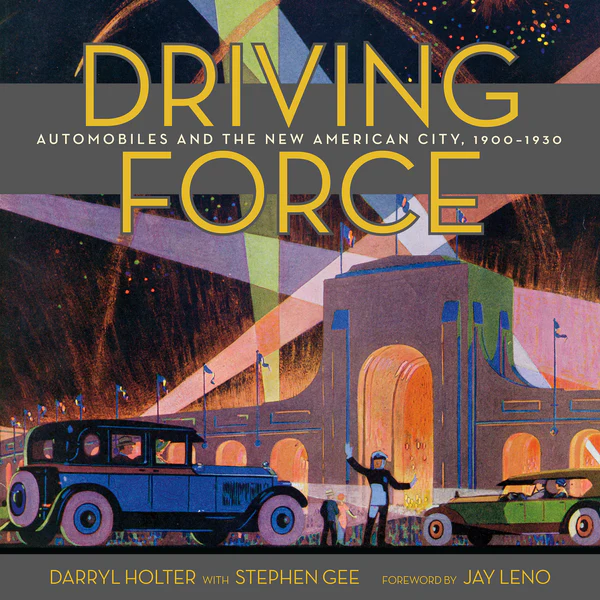
Driving Force: Automobiles and the New American City 1900-1930 (Angel City Press) explores how Los
Angeles’s enigmatic car culture propelled the explosive growth of America’s passion for cars. And with thoroughly researched text and page-after-page of vintage images, it shows how roadblocks that limited the sales of automobiles in the rest of the country, were eliminated in a new-thinking city in the earliest days of the car industry.
At the dawn of the twentieth century, as Los Angeles transformed from a rugged outpost to a booming metropolis, so too did the fledgling automobile simultaneously come of age. Ignited by an unlikely and visionary mix of entrepreneurs who ventured into unknown territory, early adopters broadened the market and convinced the public that cars were no longer a luxury—they were the ultimate modern necessity. From these early enthusiasts, men and women in various business recognized that the automobile would change society and wanted a piece of that action. The city’s auto business emerged initially among bicycle shop owners, carriage retailers, and automobile aficionados who started selling—and repairing!—cars. Their workshops thrived, expanded, and eventually became dealerships, the key component to the auto boom.
In this first major history of dealers at work—and one of the first books to chronicle the early history of cars in Los Angeles—authors Darryl Holter and Stephen Gee share the untold story of pioneering automobile dealers who seized the chance to join a start-up industry that reinvented an American city. Some became wealthy and powerful, others failed. But the lure of the automobile never wavered.
The L.A. dealers helped change the way cars were sold. They championed selling cars on credit while accepting“used cars” that buyers “traded in” so they could buy a new one. They introduced the West Coast to the concept of dealerships with service bays for on-site car repairs; persuaded manufacturers to design cars to their specifications and created custom vehicles and innovations that were copied around the country.
With more than 150 spectacular vintage images—many never before published—Driving Force brings to life the people who made the automobile an icon of the modern American city. In its pages, readers will discover how the story of the automobile is interwoven with Southern California’s unique topography and sun-drenched climate; a new era of women’s rights, and a growing female influence on automobile design; the creation of the Los Angeles Auto Show and the remarkable 1929 fire that threatened to destroy it; and how car dealers launched renowned L.A. radio and television stations, including KNX, KFI, and KCBS-KCAL.
As car collector extraordinaire Jay Leno explains in his Foreword to Driving Force, “Darryl Holter shows that auto retailers connected manufacturers to buyers, changing America and shaping the history, economy, and culture of Los Angeles.”

As World War II drew to a close, America’s premier fire apparatus builder–the American-LaFrance Foamite Corp. of Elmira, N.Y.–bet the company’s future on its radical new cab-ahead-of-engine 700 Series fire engines. In a spectacular gamble to capture the superheated postwar market, all of the company’s existing products were discontinued and its customers were essentially told to “take it or leave it.” This bold gamble paid off and 700 Series rigs soon filled firehouses across the nation, sweeping aside all competitors and ultimately defining the breakthrough 700 as “America’s Fire Engine.” This is the first comprehensive history of the game-changing 700. Individual chapters detail not only each of the eight major vehicle types but also the origins, design controversies, manufacturing, and marketing of the 700 and short-lived transitional 800 Series. The book includes a meticulously researched registry of every 700/800 series apparatus delivered, supported by many interpretive tables detailing production, specifications and major fire department fleets.

Prohibition was imposed by eager temperance movements organizers who sought to shape public behavior through alcoholic beverage control in the 19th and early 20th centuries. The success of reformers’ efforts resulted in National Prohibition in America from 1920 to 1933, but it also resulted in a thriving illegal business in the manufacture and distribution of illegal liquor. The history of Prohibition and the resulting illegal drinking is frequently told through the lens of crime and violence in Chicago and other major East Coast cities. Often neglected are the effects of Prohibition on the Western part of the United States and how Westerners rose to the challenge of avoiding the consequences of illegal drinking. Illegal liquor was imported from abroad, made in stills using strange ingredients that were sometimes poisonous to the unlucky drinker. This history includes stories ranging from serious to quirky, and provides an entertaining account of how misguided efforts resulted in numerous unintended consequences.
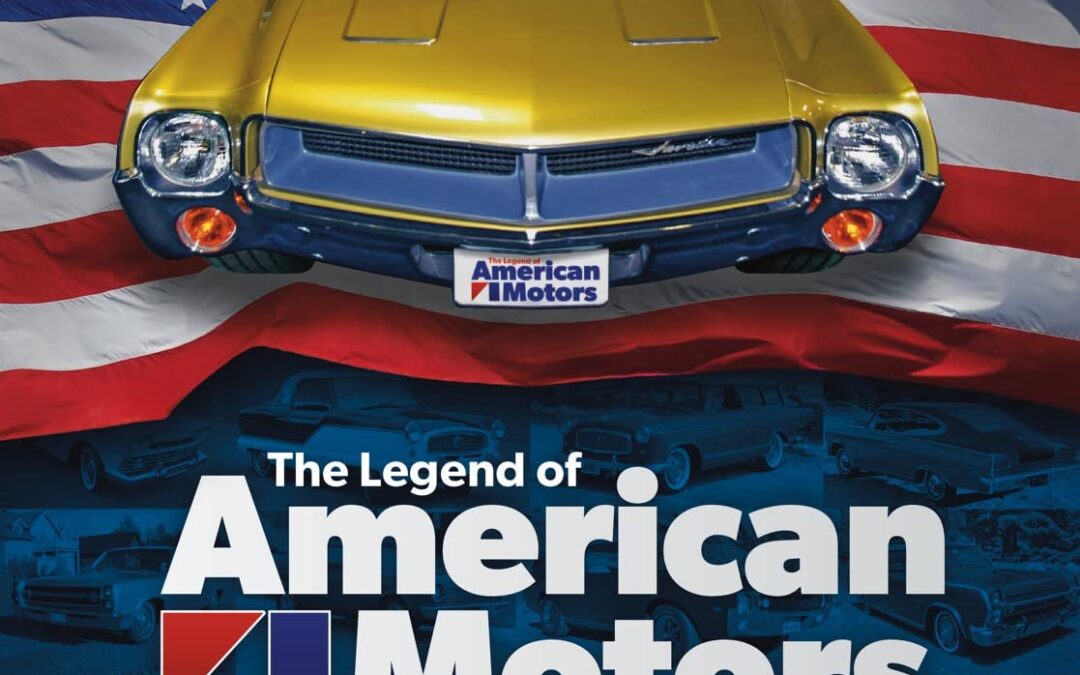
American Motors was the little automotive company that made a big impact. Makers of the Rambler family car, Kenosha offered an antidote to the excess of Detroit’s Big 3. But when America decided it wanted sporty, rather than econocars, AMC got groovy with the Javelin, AMX, Scrambler and Rebel Machine. American Motors was a proven performer in showrooms and on the track, with success in drag and road course racing. However, through it all came solid Rambler value, and a different approach from Detroit: An accent on consumer protection, along with brand label special editions. And when it came to blue sky thinking, AMC surpassed all with their Gremlin and Pacer small cars. Off road, Kenosha truly made Jeep ‘The One & Only,’ popularizing the brand and making it the sales success it is today. Beyond that, AMC created America’s first crossover, the Eagle. It all proved that America’s smallest … was its biggest surprise!
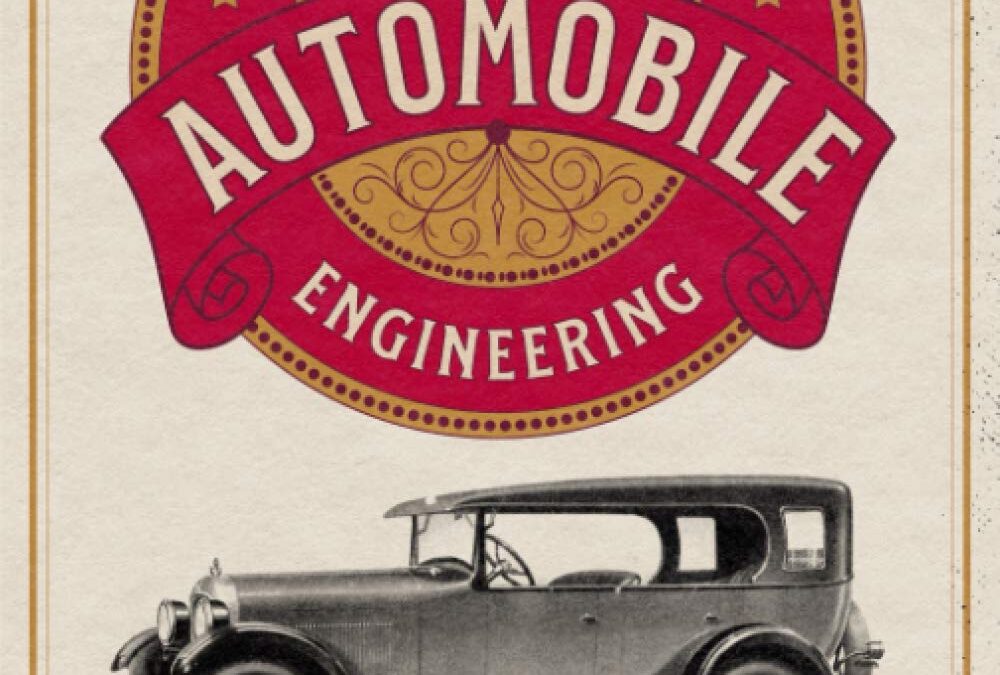
Volume 5 concludes the in-depth five-part series with detailed antique car wiring diagrams, data sheets, and a thorough look at classic electrical systems.
The Classic Cars and Automobile Engineering series spans five volumes with more than 1500 images and diagrams for enthusiasts, collectors, and mechanics. Volume 5 includes:
– Digitally restored images and diagrams
– Big 7” x 10” pages
– Easy to read writing style
– Author’s original page layouts
– Classic type font and hand-drawn lettering
– Bold retro-style cover
Everything that you ever wanted to know about the inner workings of antique cars, trucks, bikes, engines, tractors and more are included in this expansive tome of knowledge. Originally printed in 1926, this vast wealth of knowledge for classic car lovers was digitally restored and enhanced by writer-historian Mark Bussler and the CGR Publishing Restoration Workshop for a new generation of automobile enthusiasts.
This detailed, illustrated book collection is a must-have reference guide for all owners of period automobiles, motorcycles, airplanes, and anything powered by early 20th-century engines. Enlarged and printed on large 7” by 10” pages, The Classic Cars and Automobile Engineering series is designed for easy reading in the shop or library. Volume 5 focuses on electrical systems, wiring diagrams and data sheets.
Included subjects: How to read wiring diagrams – symbols – charts – generators – lamp voltages – dimming devices – electric horns – ignition timing – spark plugs – distributors – currents – methods of regulation – proper conduction – hydrometer tests – low battery – electric gear shifts – and more.
Includes wiring diagrams and datasheets for Apperson, Buick, Cadillac, Case, Chalmers, Chandler, Chevrolet, Chrysler, Cleveland, Cole, Cunningham, Davis, Dodge, Dort, Duesenberg, Durant, Essex, Ford, Flint, Franklin, Gardner, Gray, Haynes, Hudson, Hupmobile, Jackson, Jewett, Jordan, Kissel, LaFayette, Lexington, Lincoln, Marmon, Maxwell, Mercer, Moon, Nash, National, Oakland, Oldsmobile, Overland, Package, Paige, Peerless, Pierce-Arrow, Rco, Rickenbacker, Rollin, Rolls-Royce, R&V Knight, Star, Stephens, Studebaker, Stutz, Wills Sainte Claire, Willys-Knight, and Winton.
Table of contents:
– Chapter 1: Reading Wiring Diagrams and Auxiliary Electrical Equipment
– Chapter 2: Wiring Diagrams and Data Sheets
– Chapter 3: Summary of Electrical Principles
– Chapter 4: Ignition Instructions
– Chapter 5: Generators
– Chapter 6: Wiring Systems
– Chapter 7: Battery
– Chapter 8: Glossary of Automobile Terms

A pathbreaking history of the regulatory foundations of America’s twentieth-century aerial preeminence.
Today, the federal government possesses unparalleled authority over the atmosphere of the United States. Yet when the Wright Brothers inaugurated the air age on December 17, 1903, the sky was an unregulated frontier. As increasing numbers of aircraft threatened public safety in subsequent decades and World War I accentuated national security concerns about aviation, the need for government intervention became increasingly apparent. But where did authority over the airplane reside within America’s federalist system? And what should US policy look like for a device that could readily travel over physical barriers and political borders?
In Sovereign Skies, Sean Seyer provides a radically new understanding of the origins of American aviation policy in the first decades of the twentieth century. Drawing on the concept of mental models from cognitive science, regime theory from political science, and extensive archival sources, Seyer situates the development, spread, and institutionalization of a distinct American regulatory idea within its proper international context. He illustrates how a relatively small group of bureaucrats, military officers, industry leaders, and engineers drew upon previous regulatory schemes and international principles in their struggle to define government’s relationship to the airplane. In so doing, he challenges the current domestic-centered narrative within the literature and delineates the central role of the airplane in the reinterpretation of federal power under the commerce clause.
By placing the origins of aviation policy within a broader transnational context, Sovereign Skies highlights the influence of global regimes on US policy and demonstrates the need for continued engagement in world affairs. Filling a major gap in the historiography of aviation, it will be of interest to readers of aviation, diplomatic, and legal history, as well as regulatory policy and American political development.
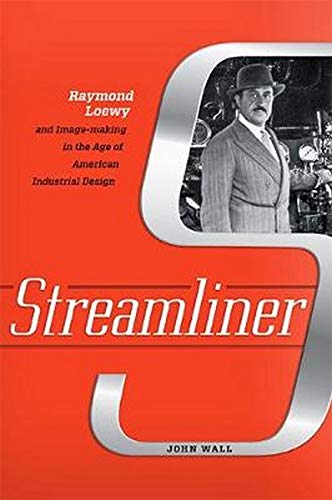
The true story of Raymond Loewy, whose designs are still celebrated for their unerring ability to advance American consumer taste.
Born in Paris in 1893 and trained as an engineer, Raymond Loewy revolutionized twentieth-century American industrial design. Combining salesmanship and media savvy, he created bright, smooth, and colorful logos for major corporations that included Greyhound, Exxon, and Nabisco. His designs for Studebaker automobiles, Sears Coldspot refrigerators, Lucky Strike cigarette packs, and Pennsylvania Railroad locomotives are iconic. Beyond his timeless designs, Loewy carefully built an international reputation through the assiduous courting of journalists and tastemakers to become the face of both a new profession and a consumer-driven vision of the American dream.
In Streamliner, John Wall traces the evolution of an industry through the lens of Loewy’s eclectic life, distinctive work, and invented persona. How, he asks, did Loewy build a business while transforming himself into a national brand a half century before “branding” became relevant? Placing Loewy in context with the emerging consumer culture of the latter half of the twentieth century, Wall explores how his approach to business complemented―or differed from―that of his well-known contemporaries, including industrial designers Henry Dreyfuss, Walter Teague, and Norman Bel Geddes. Wall also reveals how Loewy tailored his lifestyle to cement the image of “designer” in the public imagination and why the self-promotion that drove Loewy to the top of his profession began to work against him at the end of his career. Streamliner is an important and engaging work on one of the longest-lived careers in industrial design.
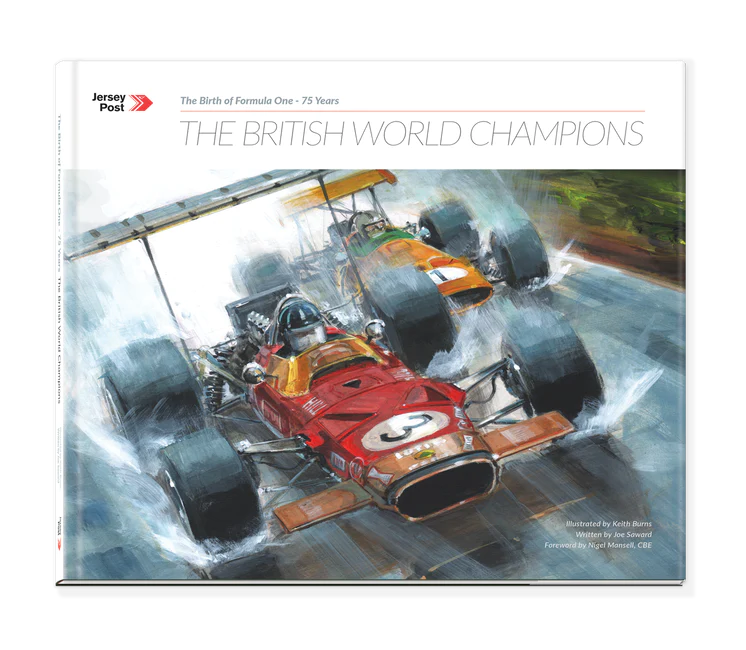
PREMIUM EDITION coffee-table book with mounted stamps included.
This beautifully bound, 48 page coffee-table book, written by journalist Joe Saward with a foreword by 1992 World Champion Nigel Mansell, accompanies the Jersey Post stamp issue celebrating 75 years since the birth of Formula One, specifically dedicating itself to the ten British drivers that have achieved the ultimate accolade of World Champion.
Award winning artist Keith Burns’ fabulously dynamic artwork features each of these champions of the sport, duelling with their rivals. From the brutally dangerous ‘50s and ‘60s where drivers such as Mike Hawthorn, Graham Hill and the extraordinary Jim Clark faced serious injury or a fiery death as an ever-present reality, through to those competing in the current era, mastering their incredible technological marvels of cars; drivers such as Jenson Button and the multiple title-winning Lewis Hamilton.
This premium version of the book comes with the stamps and miniature sheets of both Formula One issues mounted inside the book.






















